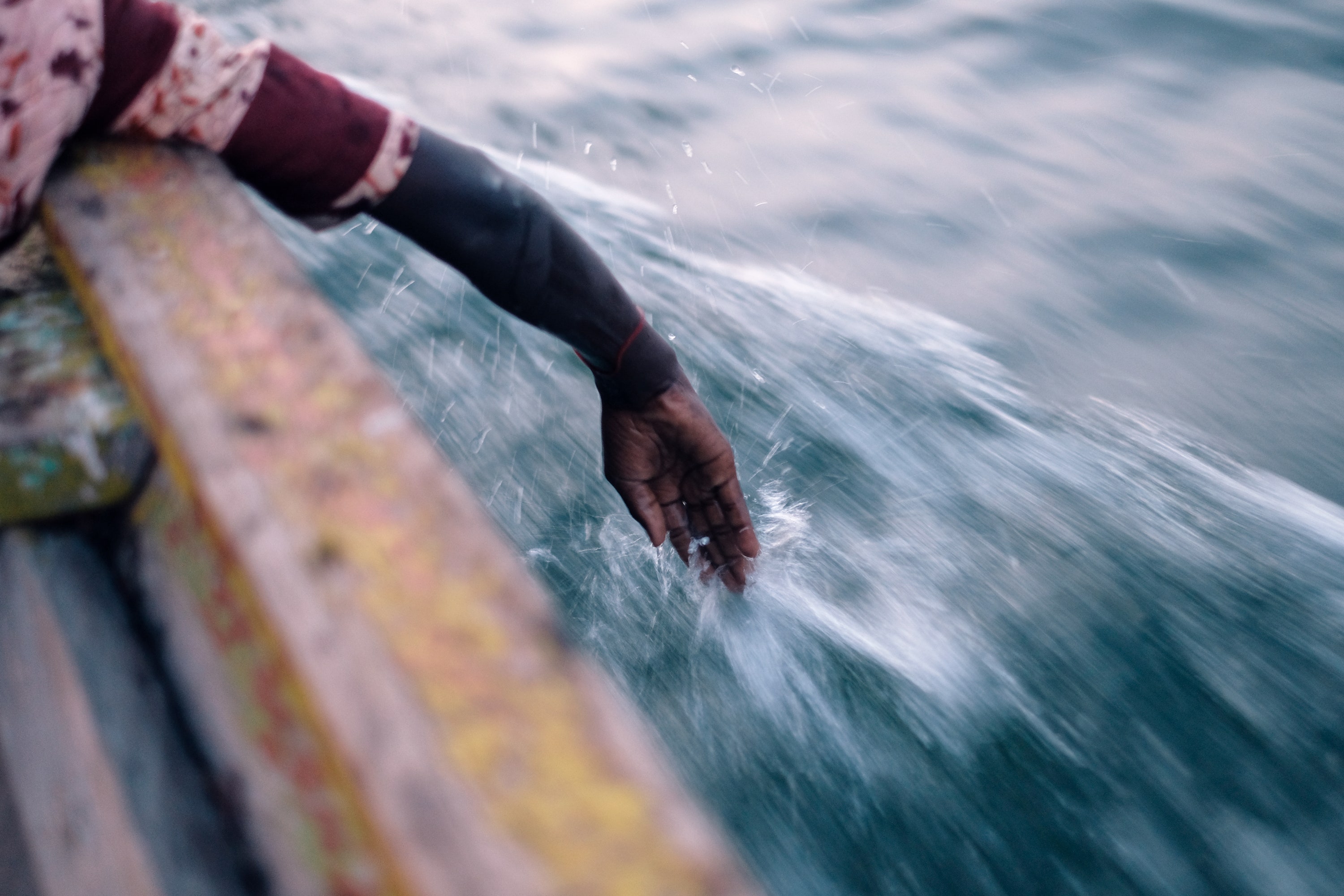
A CRUISE THROUGH WEST AFRICA REFRAMED MY EXPECTATIONS OF MY HOMELAND
The rapidly brightening sky was painted with swaths of orange, pink, and yellow. The early-morning light revealed a city that seemed to be little more than a patchwork of haphazardly planned mid-rise buildings in varying states of repair, punctuated with sprawling bushes, trees quivering in the morning breeze, and lawns sloping toward the nearby sea. The nocturnal beep-beep of tree frogs gave way to the insistent chirp of morning birds that rose from the trees to swoop across the sky like animated chevrons. As I watched the Senegalese sunrise on my first day in Africa, I was vibrating with anticipation. Dakar was waking up, and I was here to witness it.
In 2018 I was gifted a DNA testing kit. Although I was born in the UK, I am also Caribbean—my mother is Barbadian and my father is Jamaican. But it had never occurred to me to consider what had happened before the islands. The results showed that 29 percent of my DNA came from Nigeria, 29 percent from Scotland, and the remaining 42 percent from the Ivory Coast, Ghana, Benin, Togo, Mali, and Cameroon. These clues to my ancestry ignited my desire to finally visit the continent. Would Africa feel like “home”?
The opportunity arose last fall, courtesy of HX Hurtigruten Expeditions, the sister brand to Norway's Hurtigruten cruise line, which sails to places like the Galápagos Islands. The company had debuted its West Africa route as part of an effort to offer more warm-weather destinations that spotlight rich ecosystems and cultures. (This route is currently on hold per instability in the region.) We were to sail round trip from Dakar to Cape Verde, Guinea-Bissau's Bissagos Islands, and the Gambia.
My first morning in Dakar, I sipped my coffee and watched guests—more than half of them Black—circle the buffet at my hotel, the Pullman Dakar Teranga. This could have been the Jamaica Pegasus, a classic Kingston business hotel where sharp-suited men and perfectly coiffed women take morning meetings. But rather than Jamaican cornmeal porridge, they were spooning lakh, a Senegalese version made with millet. And replacing ackee and saltfish was thieboudienne, a one-pot concoction of seasoned rice, fish, and vegetables that is Senegal's own national dish.
Later that night I boarded MS Spitsbergen and settled into the stateroom on the 220-passenger expedition ship that would be my home for the next 14 days. We'd have excursions in each port that focused on the area's wildlife, history, and more. After a day at sea, I was eager to explore Santiago, our first port of call about 400 miles from Dakar, one of three Cape Verde islands we'd visit.
As I strolled Santiago's ficus-shaded streets, bordered with buildings erected by the Portuguese in the 17th century, observing residents whose skin color ranged from milky coffee to espresso, that sense of familiarity returned. These were faces I was used to seeing all across the Caribbean, from Havana to Trinidad; the style of buildings was common in Caribbean capitals from San Juan to Bridgetown.
Later we visited Santo Antão, where the mountainous landscape crisscrossed with winding roads, foamy waves crashing against black-sand beaches, and stalks of sugarcane swaying in warm breezes all looked so Caribbean to me. From my conversations with our guides, it became clear that island people share a vibe, no matter which side of the Atlantic their islands are on. Whatever our station in life, we have an innate confidence that comes from being big fish in small ponds, our sense of agency inversely proportionate to the size of our homes. And although I don't speak Portuguese, I recognized the animated way people here spoke to one another, with enthusiastic hand gestures and voices so loud that outsiders might mistake conversation for argument.
The next day, on the island of Fogo, a hiking excursion across jet-black lava fields to the crater of Pico de Fogo, its still-active volcano, was novel as well as challenging. But as the Spitsbergen pulled away from Fogo, the sharp outline of its mountains blurring with every mile, I couldn't shake the feeling that nothing in Cape Verde had delivered the Africa I'd imagined. The islands felt familiar, yes, but disappointingly so.
Although I didn't see the Africa I expected, some of what I saw affected me deeply. Just off Senegal's coast on Gorée Island, once the world's largest trading post of enslaved Africans, I was moved to tears at the Door of No Return, the final site through which an estimated 20 million of my ancestors were forced before boarding ships to the New World. It was a sobering place to begin our cruise, but an essential one, I felt, to put the rest of our journey into appropriate context. I left not just with sadness about what I'd seen but also with a huge sense of pride that I'm part of a race that not only survived such unspeakable brutality but thrived despite it.
Ending my trip, I realized that I too had unconsciously bought into common stereotypes. I hadn't been expecting landscapes and vegetation and city scenes that felt so much like what I knew from back home. I'd hoped to have at least one person remark on how much I resembled the people from a particular town or region—to be “claimed.” I'm always championing the Caribbean's diversity, cautioning visitors not to assume all 30 or so islands on the tourist map are the same. Similarly, the 54 African countries share a land mass, but their cultures, religions, topographies, and cuisines are diverse. For me to expect to feel an ancestral pull in places where my ancestors may never have set foot was, I realized, entirely too much to ask of a continent.
This article appeared in the September/October 2024 issue of Condé Nast Traveler. Subscribe to the magazine here.